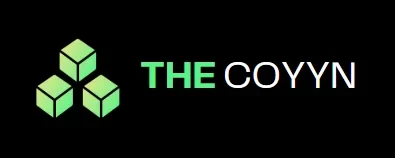Hold Rel Mem Cr on Your Bank Statement
You’re checking your Chase bank statement, and there it is: hold rel mem cr. It sounds like a cryptic code, and you’re left wondering what it means for your money. Don’t worry—you’re not alone. Many people spot this term and feel confused. This article breaks it down in simple terms, so you know exactly what’s happening with your funds. Whether it’s a temporary hold or a released credit, you’ll walk away with clear answers and practical tips to manage your account like a pro.
What Is Hold Rel Mem Cr?
You’ve seen “hold rel mem cr” on your statement, but what does it actually mean? It’s a banking term that shows a hold on your deposited funds has been lifted. Let’s break it into parts to make it crystal clear.
Breaking Down the Term
The phrase “hold rel mem cr” stands for “hold released memo credit.” Each word tells part of the story. “Hold” means the bank restricted access to your funds. “Rel” (released) shows the restriction is gone. “Mem cr” (memo credit) is a temporary credit reflecting the deposit. Together, it signals your money is now available after verification.
Why Banks Use This Code
Banks like Chase use codes like “hold rel mem cr” to track transactions. It’s their way of noting that a deposit—say, a check—was held for review but is now cleared. This code helps you and the bank stay on the same page about your account status.
Common Scenarios for Holds
You might see this code after depositing a large check or making an unusual transaction. For example, if you deposit $5,000, Chase might hold it to ensure the check is valid. Once verified, “hold rel mem cr” appears, meaning you can use the funds.
How It Affects Your Balance
When “hold rel mem cr” shows up, your available balance updates. Before the hold is released, you might see a lower balance or restricted funds. After the release, the full amount is yours to spend, but always double-check your statement to confirm.
Real-Life Example
Imagine you deposit a $2,000 check from a client. Chase places a hold to verify it. A few days later, you see “hold rel mem cr” on your statement. That’s the bank saying, “All clear!” Your $2,000 is now ready for use.
Why Do Banks Place Holds?
Banks don’t hold your money just to mess with you. There’s a reason behind it, and it’s usually about safety. Understanding why holds happen can save you stress when you see “hold rel mem cr.”
Preventing Fraud
Banks like Chase place holds to protect you and themselves. If someone writes you a bad check, a hold gives the bank time to verify it. This reduces the risk of you spending money that might not exist.
Verifying Large Deposits
Big deposits often trigger holds. Say you deposit $10,000. Chase might hold it for a few days to confirm the funds are legit. Once they’re sure, the hold lifts, and “hold rel mem cr” appears.
Unusual Account Activity
If you usually deposit $500 checks and suddenly drop in a $5,000 one, the bank might flag it. Unusual transactions get extra scrutiny to ensure nothing fishy is going on. The hold protects your account.
New Account Rules
Just opened a Chase account? New accounts often face stricter hold policies. Banks want to establish trust before letting you access large deposits. After verification, you’ll see the hold released.
Federal Regulations
Banks follow rules like Regulation CC, which sets guidelines for fund availability. For example, checks over $5,000 may have longer holds. These rules ensure banks operate safely and fairly.
| Reason for Hold | Example Scenario | Typical Hold Duration |
| Fraud Prevention | Bad check deposit | 1-5 business days |
| Large Deposits | $10,000 check | 2-7 business days |
| Unusual Activity | Sudden $5,000 deposit | 1-3 business days |
| New Account | First deposit | Up to 9 business days |
How Long Do Holds Last?
Waiting for funds can feel like forever, especially when you need cash now. How long a hold lasts depends on a few factors. Here’s what you need to know about “hold rel mem cr” timing.
Bank Policies
Every bank has its own rules. Chase’s hold policy varies based on your account history and deposit type. Typically, holds last 1-7 business days, but checking Chase’s website or calling customer service can give you specifics.
Deposit Type
Checks from local banks might clear faster than out-of-state ones. Electronic deposits, like direct deposits, often have shorter holds. For example, a $1,000 local check might clear in 1-2 days.
Account History
Been with Chase for years? Good account history can shorten holds. If you’re a new customer or have had overdrafts, expect longer waits. Your track record matters when banks decide hold durations.
Amount of Deposit
Smaller deposits (under $200) often clear quickly. Larger ones, like $5,000 or more, face longer holds. Chase needs time to verify big amounts, which delays the “hold rel mem cr” status.
What Reddit Users Say
On Reddit, users share stories about “hold rel mem cr but funds are available.” Some say funds show as available before the hold fully lifts. Always confirm with Chase to avoid spending unverified money.
| Deposit Type | Hold Duration | Notes |
| Local Check | 1-2 days | Faster if under $200 |
| Out-of-State Check | 3-5 days | May vary by bank |
| Large Deposit | 2-7 days | Over $5,000 |
| Electronic Deposit | 0-1 day | Direct deposits |
Managing Hold Rel Mem Cr Issues
Seeing “hold rel mem cr” is a relief, but what if the hold lingers or causes problems? Here’s how to handle it and keep your finances on track.
Review Your Deposit
Check your deposit details—amount, date, and source. Mistakes, like depositing to the wrong account, can delay funds. Confirm everything matches your records to spot issues early.
Contact Chase Customer Service
If the hold lasts too long, call Chase at (800) 935-9935. Explain your situation and ask about the hold status. Have your account number and deposit details ready for a quicker resolution.
Keep Documentation
Save deposit slips, receipts, or screenshots of transactions. If there’s a dispute, these prove your case. For example, a deposit slip can confirm the check amount and date.
Plan for Delays
Large deposits often trigger holds, so plan ahead. If you need funds for a big purchase, deposit early to account for verification time. This avoids last-minute stress.
Avoid Overdrawing
Don’t spend funds until “hold rel mem cr” appears and your balance updates. Spending unverified money can lead to overdraft fees. Check your available balance daily to stay safe.
In my experience, calling the bank right away clears up confusion faster than waiting. I once had a hold on a $3,000 check, and a quick call to Chase shaved two days off the wait.
| Action | Purpose | How to Do It |
| Review Deposit | Spot errors | Check statement details |
| Contact Bank | Speed up release | Call (800) 935-9935 |
| Keep Records | Resolve disputes | Save receipts |
| Plan Ahead | Avoid delays | Deposit early |
Tips to Avoid or Manage Bank Holds
Holds can be a hassle, but you can minimize them with smart habits. Here are five strategies to keep your funds flowing smoothly.
1. Deposit Smaller Amounts
Break large deposits into smaller ones if possible. Deposits under $200 often clear faster, reducing the chance of a hold.
2. Use Electronic Transfers
Direct deposits or ACH transfers clear quicker than checks. Set up electronic payments to avoid “hold rel mem cr” delays.
3. Build a Strong Account History
Pay bills on time and avoid overdrafts. A solid track record with Chase can shorten hold times for future deposits.
4. Verify Checks Before Depositing
Call the issuer’s bank to confirm a check’s validity. This can prevent holds or issues like “deposited item returned Chase.”
5. Communicate with Your Bank
If you expect a large deposit, notify Chase in advance. They might reduce the hold time, saving you stress.
What I learned the hard way is that depositing a big check without warning the bank can lead to a week-long hold. Now, I always call ahead.
Related Bank Statement Codes
“Hold rel mem cr” isn’t the only code you might see. Other terms can pop up, and knowing them helps you decode your statement like a pro.
Hold Memo Dr Meaning
“Hold memo dr” (debit) shows a temporary debit hold, often for pending purchases. Unlike “hold rel mem cr,” it restricts funds until the transaction clears.
Deposited Item Returned
This means a deposited check bounced. Chase reverses the credit, and you might face fees. Contact the check issuer to resolve it.
Pending Credit Transaction
A pending credit is a deposit in progress, not yet available. It might show before “hold rel mem cr” if the bank is still verifying.
Available vs Pending Balance
Your available balance is what you can spend. Pending balances include holds or unverified deposits. Check both to avoid overdrafts.
Here’s a tip I always give beginners: Read your statement weekly. Catching codes like “hold rel mem cr” or “hold memo dr” early prevents surprises.
FAQs About Hold Rel Mem Cr
What does hold rel mem cr mean?
It means Chase released a hold on your deposit. The funds, verified as legit, are now available for use.
How long does a hold last?
Holds typically last 1-7 business days, depending on the deposit type, amount, and your account history.
Can I use funds during a hold?
Sometimes, partial funds are available, but wait for “hold rel mem cr” to confirm full access to avoid fees.
Why did my check get returned?
A “deposited item returned Chase” means the check bounced. Contact the issuer and confirm with Chase.
How do I remove a bank hold?
Call Chase, provide deposit details, and ask for a faster release. Good account history helps speed things up.
Also Read: Art ThunderontheGulf Craft: Discover Coastal Creativity at Thunder on the Gulf Festival
Conclusion
Seeing “hold rel mem cr” on your Chase statement can be puzzling, but it’s just the bank’s way of saying your funds are ready after a hold. By understanding why holds happen, how long they last, and how to manage them, you can avoid stress and keep your finances on track. Review deposits, contact Chase when needed, and plan ahead to sidestep delays. With these tips, you’re ready to handle any bank hold like a pro.







